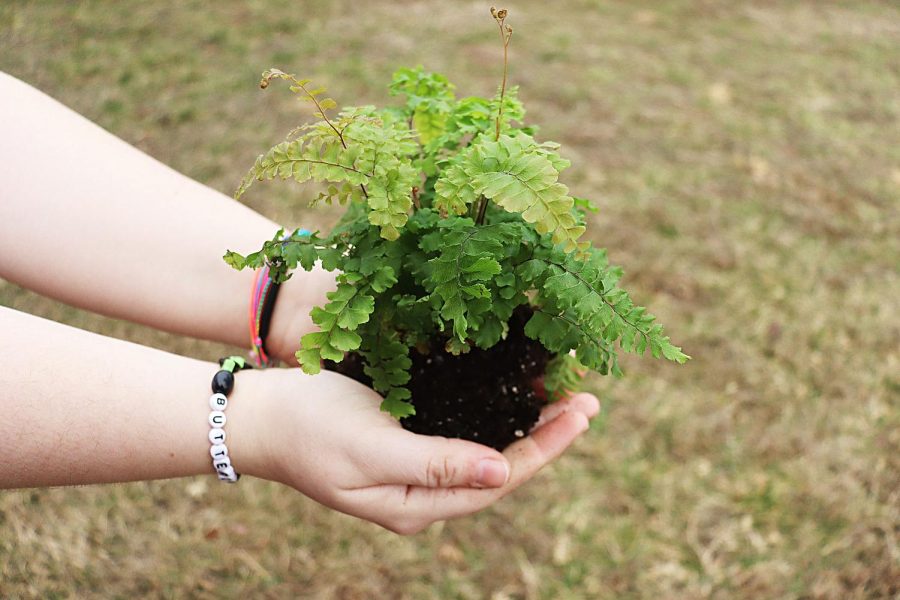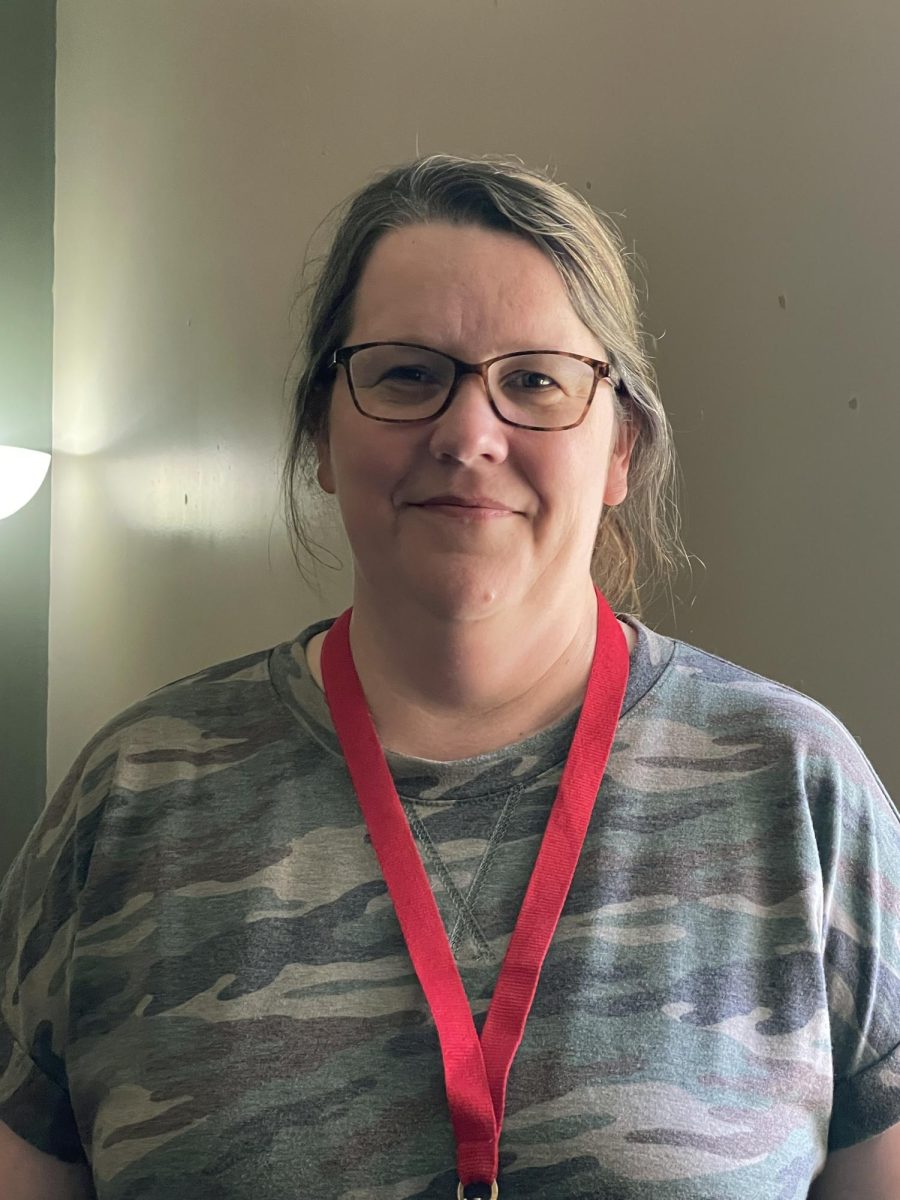Love Your Mother
This Earth Day, students can ramp up their efforts through recycling
“Our Combined efforts make one big impact.” – Ashley Krug, Department of Environmental Services in Springfield
March 8, 2023
One way that students can change the world is through recycling.
Christina Shepherd is the sponsor for the Green Team at Nixa High School, a club that focuses on recycling and other projects that protect the environment. Shepherd said one reason to protect our environment is for our future generations.
“Recycling is important to save the environment,” Shepherd said. “[We must preserve] it for our kids and for our grandkids. [We should] leave it better than how we found it.”
Recycling can be an umbrella term — it’s not necessarily just the paper and plastic most are used to when they hear the term recycling. Ashley Krug is the city of Springfield’s market development coordinator for the Department of Environmental Services. Krug’s team is looking into combating waste, specifically food waste.
“I work primarily on building markets in Springfield for recycling and overseeing the department’s stainability goals,” Krug said. “This means that it’s part of my job to look at the materials that our citizens are sending to the landfill and find opportunities for us to build new recycling opportunities that may not already exist. Right now, we’re focusing a lot on food waste recycling and finding opportunities for citizens to not throw away food, but instead compost.”
Racheal Ajayi is the household hazardous waste coordinator at the Missouri Department of Natural Resource’s Waste Management Program. Ajayi said compost is typically used as a soil additive, but may also contribute plant nutrients.
“Composting means collecting carbon, [like] dry leaves [or] saw dust paper, and nitrogen, [like] leftover food [or] manure, and [then] mixing together in certain proportions to promote decomposition,” Ajayi said.
While Springfield is focusing on recycling and composting food waste, Nixa is focusing on recycling boxes. Troy McGinnis is a utility worker at the City of Nixa Recycling Center. Due to the uprise in online shopping, they have also noticed an increase in recycled cardboard.
“It’s important to recycle the things that can be recycled — cardboard is a great example,” McGinnis said. “Everyone is ordering more online now, so there’s more of a demand for cardboard to ship items in. Either more trees have to be cut down to make that cardboard, or we can recycle cardboard and use boxes multiple times so we don’t have to cut down so many trees. … We also have added a new cardboard dumpster to [combat this].”
Recycling aside, there are a multitude of other ways to keep Earth clear from pollution.
“Besides recycling, keeping water and air clear by not polluting are good ways to keep the Earth [clean],” McGinnis said. “[Nixa’s] street sweepers help keep our water clean by [cleaning] up debris, trash and chemicals out of the streets where rain collects the pollutants and carries them into ditches, streams, rivers, lakes and the aquifer where our drinking water is from”
Another way to help the environment is to avoid single-use plastics, like straws and plastic bags.
“Single-use plastics especially irritate me,” Krug said. “They’re meant to be used for a very short period of time, but will last forever on the planet. Plastics don’t actually decompose, they just get smaller and smaller. There’s a fact that always blows my mind — every single piece of plastic that was ever made is still on the planet. That makes it really important for me to encourage citizens to recycle and hopefully, to convince manufacturers to make products out of materials that can actually be recycled.”
Sometimes the use of single-use plastics is almost impossible to avoid. However, there are ways to repurpose them.
“[I’ve found] a great use for [single-use plastics] — take a 2-liter bottle and use it as a plant starter,” Shepherd said. “Using that single-use plastic at least one more time before you throw it away is better than only using it once.”
Because these materials would be put to use again and stay out of landfills, reusing and recycling can help the effects of climate change.
“Climate change is simply the change in weather conditions such as temperature, rainfall, wind patterns and other climatic conditions over a long period,” Ajayi said. “Many environmental problems are linked to inadequate understanding in that area. As science evolves and people personally experience the impacts, they might be inclined to treat mother earth with greater care and caution.”
While paper and cardboard are recyclable, failure to properly separate the two from general trash defeats the purpose of being able to break down faster than synthetic materials, like plastic.
“Sadly, the number one largest quantity item we see in our landfill is something that is easily recyclable — paper and cardboard,” Krug said. “It represents over 26 percent of all materials currently sitting in the landfill.”
Lack of general knowledge also contributes negative and harmful ideas to the process of recycling.
“I think people think that because materials like paper are biodegradable that it’s not that big of a deal to throw it away,” Krug said. “Because landfills compress and essentially encapsulate trash, they operate through anaerobic decomposition, or to decompose without air, which takes longer. A piece of paper in nature would decompose very quickly — within 30 days. In a landfill, you can find newspapers from over 50 years ago still in pretty [good] condition.”
Demonstrating good recycling habits to other people can encourage a chain reaction. One’s recycling actions can inspire others to do the same.
“By understanding that personal responsibility for stainability is key to [survival] of the human race,” Ajayi said. “We can only control our own actions. By remaining consistent in environmental stewardship, we are playing our individual part. Someone might be watching us and overtime, that consistent action may influence someone else’s behavior and subsequent actions.”
Additionally, being aware of the products and their packaging that consumers purchase also contributes to the recycling chain.
“Being mindful about what we all purchase is a huge piece of [protecting the Earth],” Krug said. “That may mean buying in bulk for some people, it may mean trying to choose items that are packaged in recyclable materials, or intentionally not buying certain items.”
Donating is also a great way to reduce waste. Donating old clothes, shoes or toys can help keep those items out of landfills.
“I’m a huge [advocate] of secondhand buying,” Krug said. “I, for one, have so many kids toys from my [son] that I know can’t be recycled — kids toys are notoriously difficult to recycle because they have many components to them. I know that another kid would probably love them.”
Plastic bags are an example of single-use plastics and they cannot be recycled. However, some stores offer special bins for recycling of these bags.
“[There are items I wish were recyclable] like bubble wrap and plastic bags,” McGinnis said. “We cannot accept plastic grocery bags at the [City of] Nixa Recycling Center, but some stores like Walmart will recycle those for you.”







